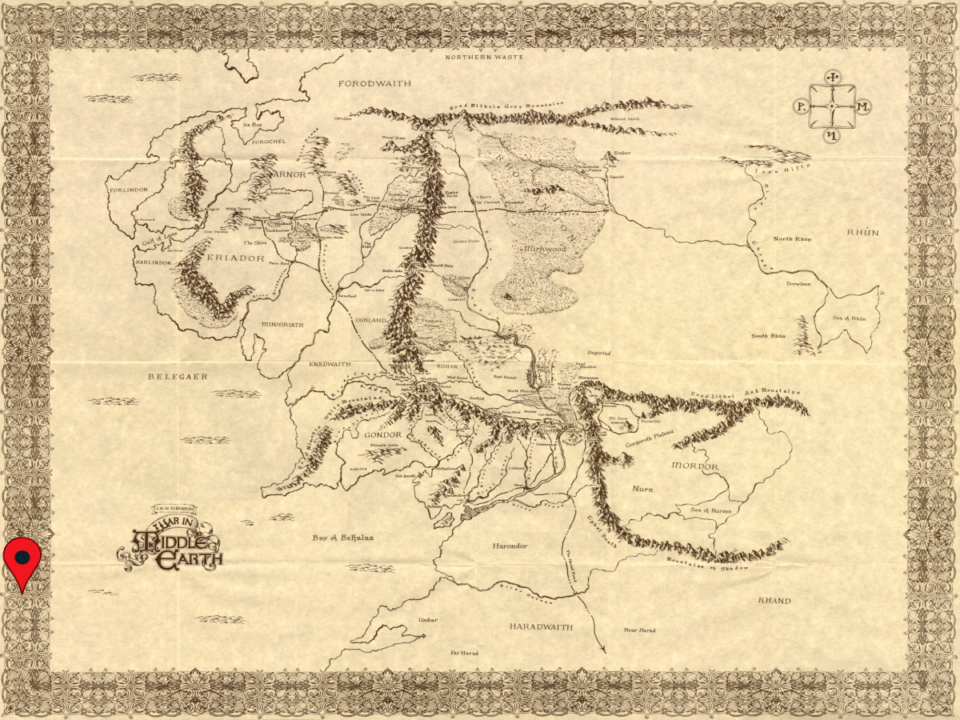Welcome back to everyone’s favorite www.isleyunruh.com Monday feature! Middle-earth being the place of enchantment and wonder that it is, each month I will use my love of fictional cartography to transport you to another time and place. So why not take a moment to fill your head full of knowledge that will have no bearing at all on the real world?
This month I’ll take a look at the storied Island of Meneltarma, last remnant of the once great land of Númenor.
Shortly after the breaking of Thangorodrim and the drowning of Beleriand at the end of the First Age of the Sun, the Maia Ossë, under the guidance of Ulmo, Lord of Waters, caused the land of Númenor to rise out of the sea. A massive island of around 167,961 square miles, Númenor dominated the Second Age as the center of culture and technology for Middle-earth. However, when the last king of Númenor, Ar-Pharazôn, came to be corrupted by his prisoner Sauron into attacking the Undying Lands, Ilúvatar himself forever sundered Aman from Middle-earth, and, in his wroth, caused Númenor to sink beneath the sea, drowning the entire land beneath the cold waters of Beleagaer. From that day on, Númenor was known as Atalantë, the Downfallen.*
However, long into the Third Age, rumors persisted that the highest point of the Pillar of Heaven, that great volcanic holy mountain named Meneltarma, still existed as a small island some thousand miles to the West of Far Harad. This was hardly surprising as Meneltarma stood some 14000 feet high and even Ilúvatar would have been hard pressed to completely sink it beneath the Sundering Seas.
Some of the more daring Dúnedain even attempted to set sail to find the island, for it was said that from its lonely peak one could still see the Undying Lands in their place beyond the realms of men. However, none ever returned from such a quest and as the years passed, the stories of the Isle of Meneltarma faded into a mere hopeful legend.
Who knows, with the passing of the years, perhaps Meneltarma continued to smoke and belch its molten contents into the Sundering Seas. Perhaps Ilúvatar, his wrath abated with the passing of the years, once again allowed Númenor to grow and thrive into something beyond a cold 20 mile slab of volcanic rock jutting up from the waters of Belegaer. Perhaps, Meneltarma became a home to those bravest of Dúnedain colonists, who, against all odds, had found their way home after so many long years of exile.
* Though there has been much speculation that this name suggests an Atlantis connection, it is merely a coincidence, as Tolkien himself has pointed out: ‘It is a curious chance that the stem √talat used in Q[uenya] for “slipping, sliding, falling down”, of which atalantie is a normal (in Q[uenya]) noun-formation, should so much resemble Atlantis.’ Besides, the Second Age took place far too early in Earth’s history for Numenor to be located in the mid-Atlantic (especially considering no Atlantic Ocean existed in the year 200,000,000 BC!)


Leave A Reply